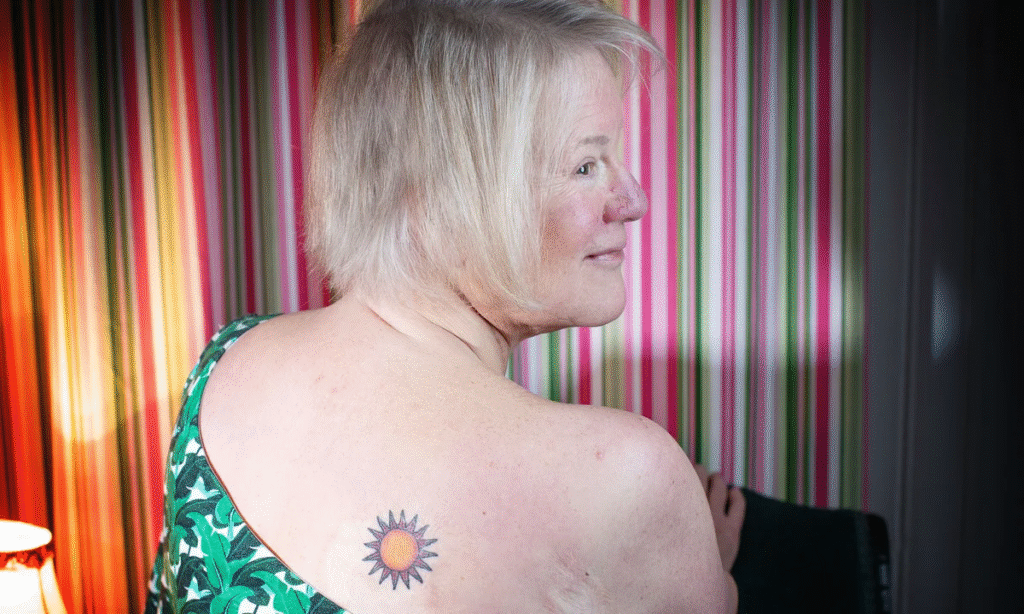Tattoos aren’t just for the young—and they never were. From Indigenous elders to retirees commemorating life milestones, body art is a timeless form of expression. But as skin changes with age, so too must the approach to tattooing it. Whether you’re an older adult considering your first tattoo or a professional artist aiming to ink mature clients safely, understanding the special considerations for aging skin is essential.
How Skin Changes With Age
As we age, our skin undergoes a number of physiological changes. The epidermis (outer layer) thins and becomes less elastic due to the loss of collagen and elastin. The dermis, where tattoo ink is deposited, also becomes more fragile and loses some of its structural integrity. Blood flow to the skin decreases, which affects healing time.
Other age-related skin changes include:
- Increased dryness due to reduced sebum production
- More visible veins and age spots
- Higher likelihood of bruising
- Reduced immune response, affecting wound healing
All of these factors mean tattooing mature skin requires careful planning and skilled technique.
Is It Safe to Get a Tattoo Over 60?
Yes, absolutely—with the right precautions. There is no upper age limit to getting a tattoo, and many older adults find it deeply meaningful. However, mature clients should consult with a medical provider beforehand if they have conditions such as diabetes, high blood pressure, or if they are on blood thinners, as these can affect both the procedure and the healing process.

Choosing the Right Tattoo Artist
If you’re over 60 and thinking of getting inked, one of the most important steps is finding a tattoo artist experienced with mature skin. A good artist will:
- Ask detailed health questions during consultation
- Explain how ink may behave differently in older skin
- Recommend designs and placements suited to your skin’s elasticity and healing capacity
- Use a slower, more controlled tattooing technique
From a professional standpoint, this is a client that requires more than just artistic talent—it demands patience, anatomical knowledge, and precision.
Placement Matters: Best Areas for Tattooing Older Skin
Certain areas of the body age more gracefully and retain their structural integrity longer, making them ideal locations for tattoos on older adults. These include:

- Upper back: Often less sun-damaged and maintains elasticity
- Shoulders: Less prone to sagging than lower arms
- Thighs and calves: Ample muscle mass and skin density
- Forearms (with care): Often a visible and meaningful location but more sensitive to aging
Areas to approach with caution:
- Hands and fingers: Very thin skin and high friction
- Neck: Skin is delicate and stretches with age
- Chest and abdomen: Susceptible to sagging or wrinkling
Design Tips: What Works Best on Aging Skin
Complex, overly detailed tattoos with micro-linework may not age well, especially on thinner or looser skin. Instead, opt for:

- Bold lines: Hold up better over time
- Black and gray shading: More forgiving to fading
- Mid-sized pieces: Easier to heal and maintain definition
- Minimal color saturation: Aging skin may not retain pigment as vibrantly
If you already have tattoos from younger years, a skilled artist can work around or incorporate older work into a refreshed design that suits your current skin condition.
Healing and Aftercare for Older Adults
Healing time for tattoos on older adults is often longer than for younger people. Here’s how to improve outcomes:
- Keep it moisturized: Use fragrance-free, non-petroleum-based ointments
- Avoid sun exposure: Mature skin is more vulnerable to UV damage
- Monitor for infection: Healing skin in older adults may show delayed immune response
- Stay hydrated and nourished: Internal health supports skin healing
It’s also important to follow all aftercare instructions to the letter—your skin will thank you.
What Tattoo Artists Should Know
According to Tattooing A to Z and How to Tattoo Safely, artists working on mature clients should:
- Use slightly shallower needle depth to prevent ink blowout
- Reduce machine speed to avoid tearing thin skin
- Avoid overworking the same area to reduce trauma
- Schedule extra time for the session to go at a gentler pace
Additionally, understanding skin conditions such as actinic keratosis, rosacea, or varicose veins can help an artist determine if tattooing a certain area is safe.
Real Stories: Getting Inked Later in Life
In Permanence, one elderly client described getting a commemorative tattoo at age 72 after her husband passed away. She said, “It made me feel strong again, like I had control over my body and my story.”
Tattoos can be an act of remembrance, celebration, or simple beauty—and those desires don’t fade with age.

Final Thoughts
Tattooing older adults is not only safe but can be incredibly rewarding for both the artist and the client. With the right approach, aging skin becomes a powerful canvas for stories, memories, and self-expression. Whether you’re 65 or 85, it’s never too late to get inked—just do it thoughtfully and with the right professional.
Recommended
1. Flawless Ink: The Ultimate Tattoo Aftercare Guide
Learn how to care for your tattoo at every stage—from fresh ink to long-term preservation. Essential reading for mature skin healing slower than average.
2. 10 Exquisite Women’s Tattoo Placement Ideas: Stylish Spots for Meaningful Ink
Explore low-pain, age-appropriate placements that look elegant and are easier on older skin.
3. 10 Heartfelt Symbolic Father Tattoo Ideas That Speak From the Heart
If you’re considering a commemorative tattoo in your later years, this guide will help you find symbols that truly resonate.
4. 10 Adorable Tattoo Quote Ideas That Are Meaningful and Timeless
Sometimes the simplest words carry the most meaning—especially in life’s second half.
5. Conducive Tips on Tattooing: What to Expect & How to Prepare for Your First Ink Seamlessly
Perfect for seniors getting tattooed for the first time. This primer walks you through the process from consultation to healing.